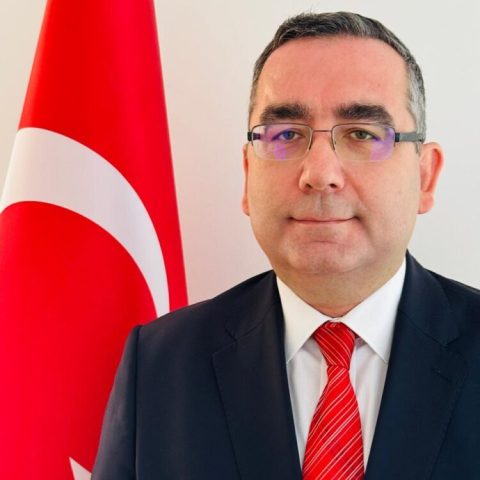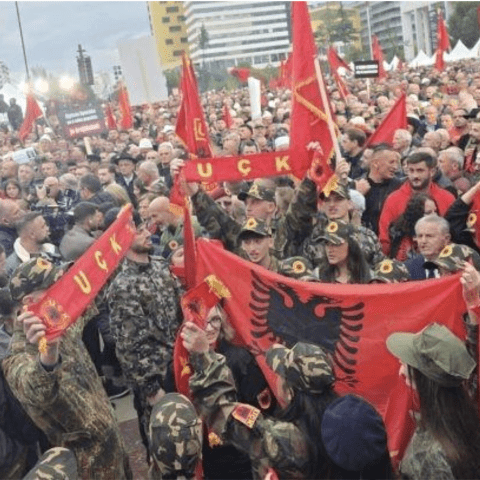By James Podles
Insulated by the Plexiglas casing, the interior of the gondola felt strangely warm and quiet on this breezy October day. As the car left the embarkation building and its speed increased, I could see the hazy outlines of the city sinking below me. After passing over haystack-covered farms, rocky cliffs, and a flock of ducks feasting on an algae-covered pond, the cable car finally dropped me off at a broad outcropping on the slopes of Mt. Dajti. I had reached Dajti Park, just east of and over a kilometer above Tirana, by way of the Dajti Express cable car (or teleferik).
Dajti was established as a national park in 1966, and the original Dajti cable car, used almost exclusively for transporting goods rather than people, was built by the government in the 1970s. This fell into disrepair, however, and it was not until 2001 that the teleferik was rebuilt, this time by a group of investors headed by Z. Muhamet Malo, president of the television channel Telesport, who now owns 96 percent of the company. The new cable car, built by the Austrian company Doppelmayr, opened in July of 2005; since then it has been carrying tourists year-round, with a maximum capacity of 360 people per hour (the imminent addition of ten more cars will bring the number up to 540 per hour).
The ride up the mountain takes about 15 minutes (as opposed to between 30 minutes and an hour of driving). The cars are outfitted with wind sensors that automatically adjust the speed of the cable to anywhere between 0.3 m/s to 6 m/s in response to the speed of the wind (and can even, under extreme conditions, bring the whole mechanism to a halt, if necessary). On gusty days, it can take slightly more time to travel the nearly four-and-a-half kilometers between the bottom of the lift (located near the Institute of Nuclear Physics, east of the city centre) and the mountain.
The ride itself was, for me, reason enough to travel to the top of the mountain, but the Dajti Express Company plans to further integrate the lift complex into the park itself, developing the area to be more attractive for weekend-long (or longer) vacations rather than simply for day trips. The company is currently concentrating on the area around the landing spot: by next summer, it plans to have built a hotel, complete with pool and restaurant, next to the top of the lift. The president’s son, Z. Klajdi Malo, told the Tirana Times that within the next two years, the company plans to have landscaped the surrounding areas, adding a network of trails for hiking and horseback riding, as well as a ski slope (served by a smaller, auxiliary lift). By drawing both Albanian and foreign visitors to the park, Z. Malo hopes that Mt. Dajti will become firmly established as a year-round tourist attraction in and of itself.
Dajti Express is considering eventually building a larger hotel, possibly including a casino and spa, as well as more ski slopes, said Z. Malo. While the company plans to finish the developments at Dajti before building any more cable cars, it is also working on a similar system in Llogara National Park, in the southern part of the country. Located between the cities of Vlora and Saranda, the Llogara cable car would traverse one of the sharpest climactic contrasts in Europe, rising from the sea-level beaches to the top of the mountains.
Since the opening and subsequent success of the Dajti Express, cable cars, an ideal form of transport for Albania’s mountainous landscapes, have begun to spring up all over the country. Here in Tirana, the cable provides a quick, easy, and relatively inexpensive (500 leke for a round-trip ticket) way to escape the heat and dust of the city; elsewhere, the concept is being adapted to the differing needs and environments of each locale. For example, four or five new lifts are planned for the Korca area alone; these will provide much-needed transport for skiers, who at the moment must walk up the mountain should they want to ski down it. These lifts will most likely be open chairlifts, rather than gondolas, in order to speed skiers’ entry and exit. Other lifts are planned for the towns of Berat and Kruja: the latter’s will connect the castle with the town’s eighteenth-century teq련Bektashi Muslim temple).
Dajti Park is still occupied in part by a military base: should you take the left-hand road from the drop-off point (as I initially did), you’ll be stopped by a drawing of a rifle-wielding soldier warning you (luckily for me, in both Albanian and English) not to enter the military zone. The right-hand road leads you into the public zones of the park, winding through the forested mountainside and along the cliffs. A herd of horses roams seemingly freely, although I hear that you can ride one around the park for a couple hundred leke per circuit.
Much of the edge of the mountainside road is overgrown with forest: I had to walk for close to half an hour before I finally reached a clear view of the valley below. Had it been a clear day, I could have seen all the way across the city; as it was, the clouds and haze obscured all but the outlines of a distant lake. The buildings of Tirana itself were barely visible, obscured beneath a blanket of smoke and dust.
On my return to the Mt. Dajti teleferik, I discovered the downside to all of the construction and renovations taking place on the mountain: the lift was being used to transport building materials to the top of the mountain. I had to wait half an hour in the park until the workmen could take a break from repaving the landing spot and the cars could be restarted. Still, the dramatic descent down the craggy mountain face made up for the wait.
Atop Tirana

Change font size:









